Each collecting trip we try and take advantage of our numbers by employing a diverse array of sampling techniques. Everyone has their favored technique, usually dictated by the type of animal they are interested in, and the method most likely to yield that animal. I’ve been doing a lot of rubble brushing which entails picking a suitable rock from the bottom and brushing off the underside into a net. When I get out of the water at the end I empty the net into a plastic bag with water and bring it back to the lab for sorting.
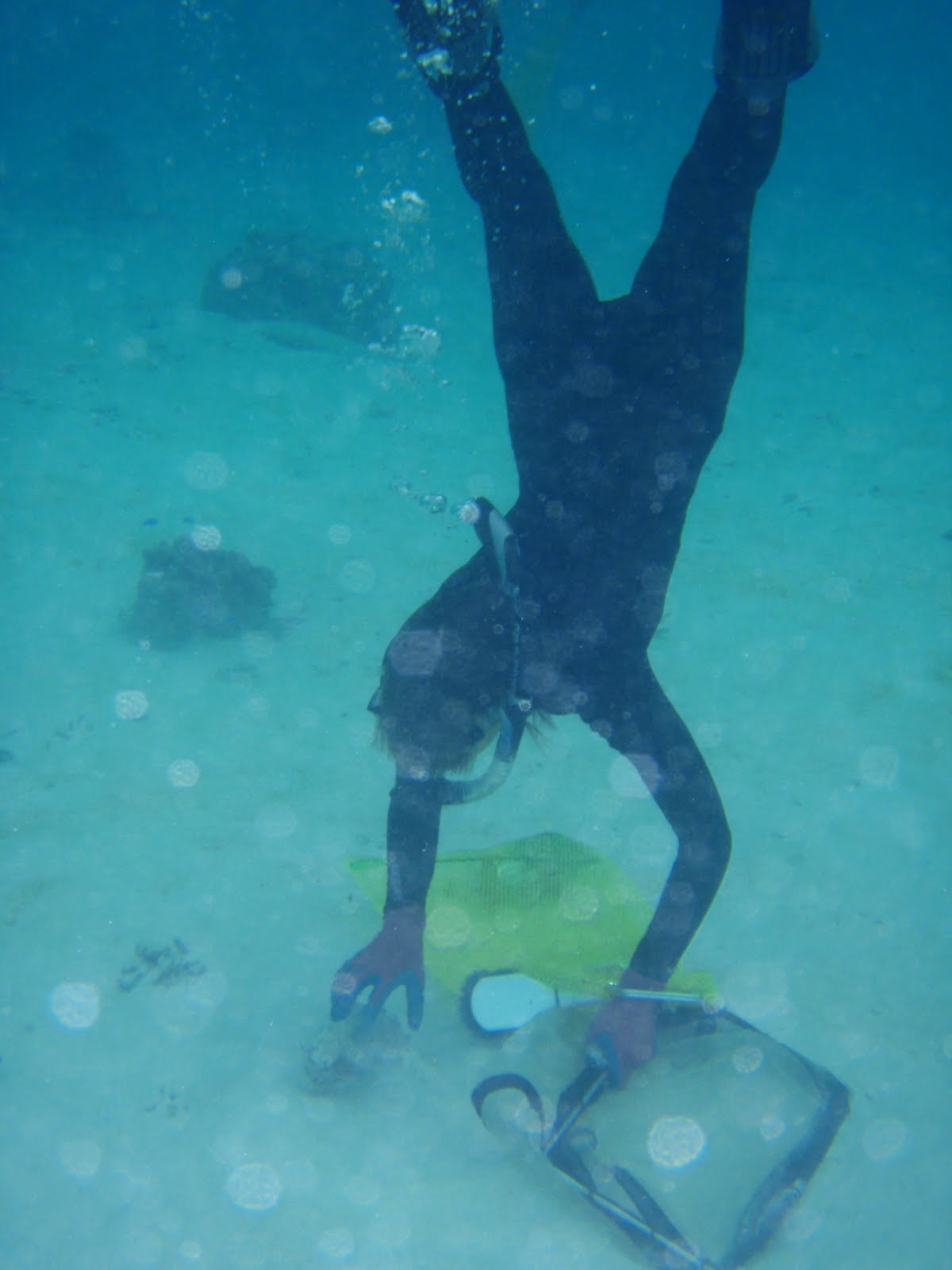
This is me getting a nice, small rock from the bottom. Since I was manning this operation solo, I had three things to hold: the rock, the brush, and the net. A quick calculation reveals that that my two hands are somewhat inadequate. When the water is shallower this doesn’t present a problem as I can kneel or stand (for breathing) and prop the rock (for brushing). At this depth I have to bring the rock to the surface to maneuver it (you know, to breathe), but it’s hard to stay afloat while brushing and holding a boulder.
Art is a pro with the yabby pump. This device uses suction to draw animals out of burrows. The plunger is pulled quickly and the contents are emptied into a sieve. The sand falls through and whatever animal that was inhabiting that burrow is left in the sieve. Pumping is more difficult in the water because you don’t have a nice solid surface with ample gravity to brace against. In this picture Sea is manning the pump and Art is holding the sieve on the lookout for interesting animals.
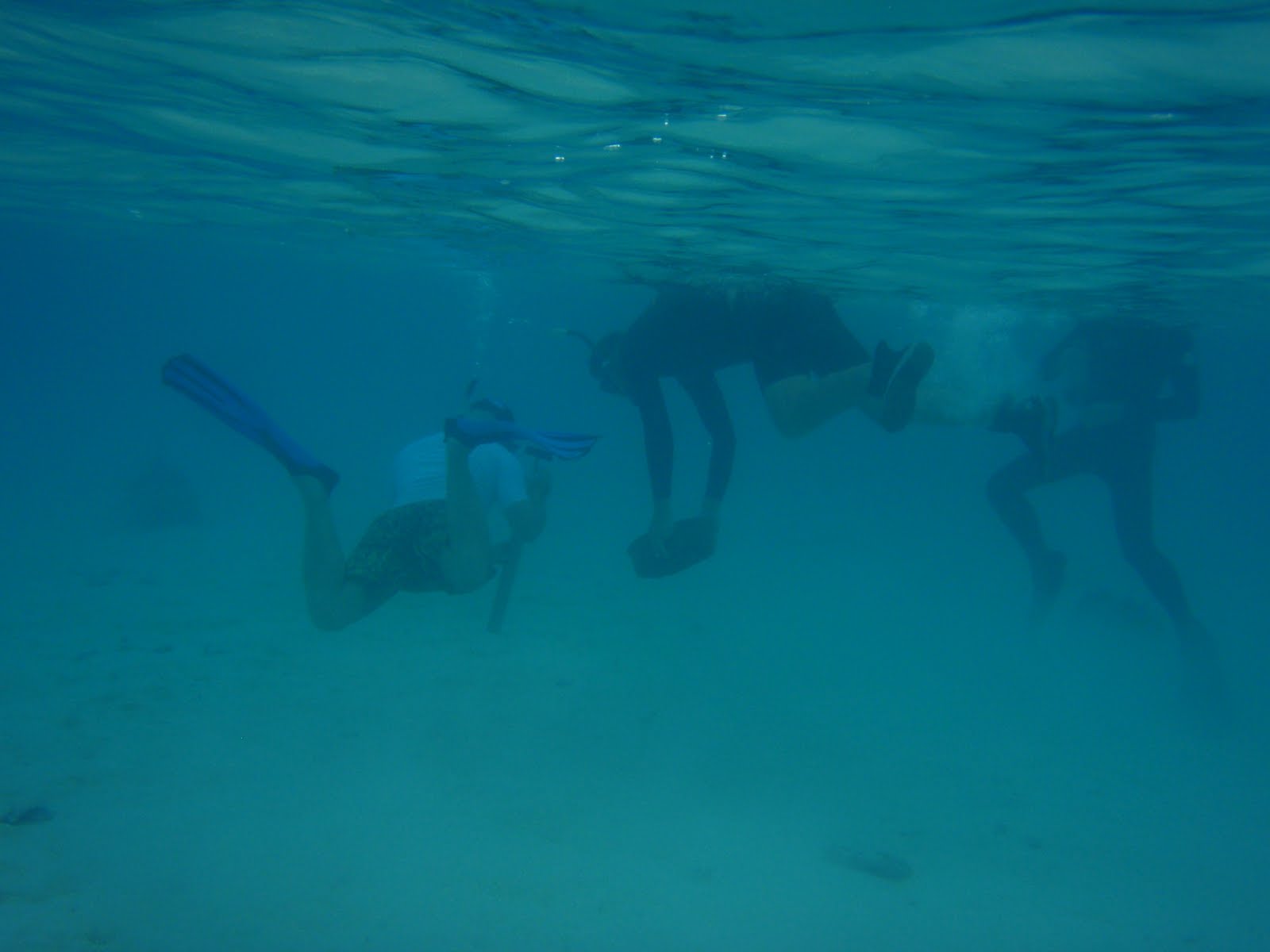
Art’s particular interest is the shrimp that make many of the burrows, but there are often many commensals that come up in the pump as well. Like this cool gastropod (snail) which we’re calling the Starship Enterprise, but which some call Phenacolepas.
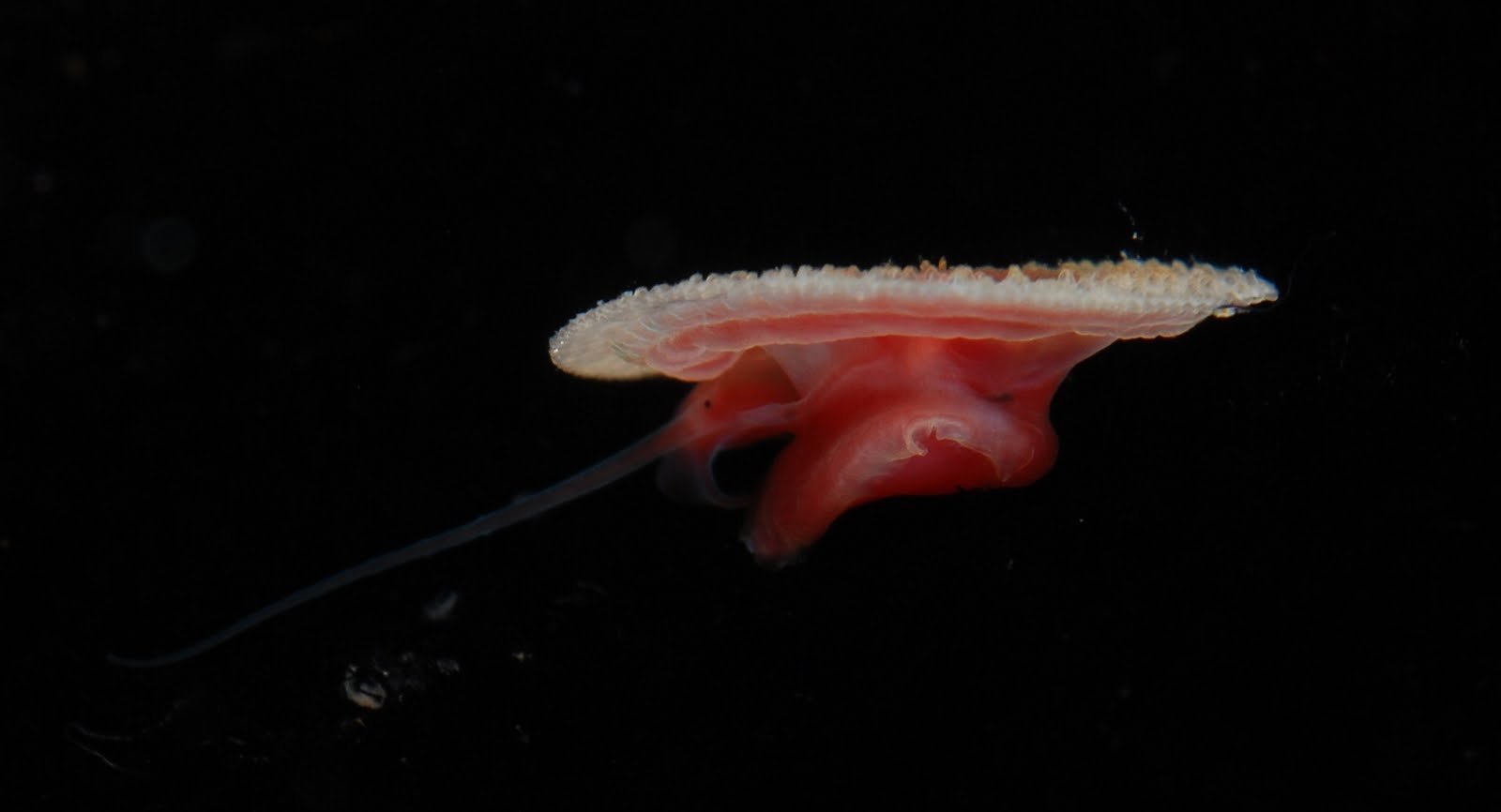
We’ve also been doing a lot of sand sieving in our quest for micromolluscs. Since John is one of the resident mollusc guys he’s being doing a lot of the sieving. He swims along the bottom pushing the sieve and scraping off the first few centimeters of sand. Then he roots through the sieve to see what he’s found. As with the brushing, the contents of the sieve will be emptied into a plastic bag at the end of the dive.
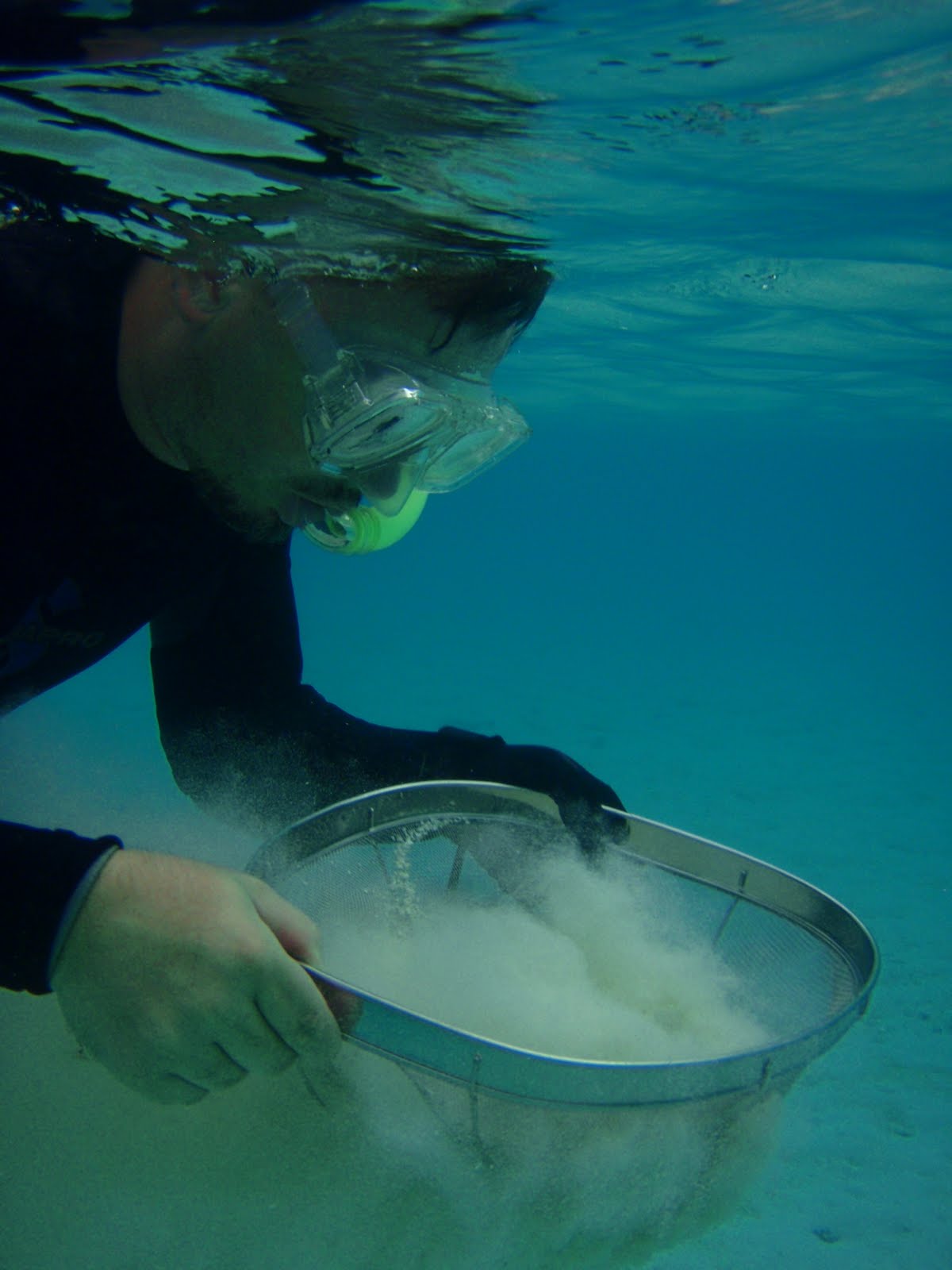
The duration of each sieve push is limited by depth and buoyancy, and once again, when snorkeling, deeper is harder.
We’ve also been getting a lot of rubble samples now that Charlotte is here with her penchant for polychaet worms. This entails hauling around bags of rocks and coral rubble which will be rooted through back at the lab.
In gathering rocks and rubble there’s a lot of sticking of hands into nooks and crannies, but one must be vigilant.
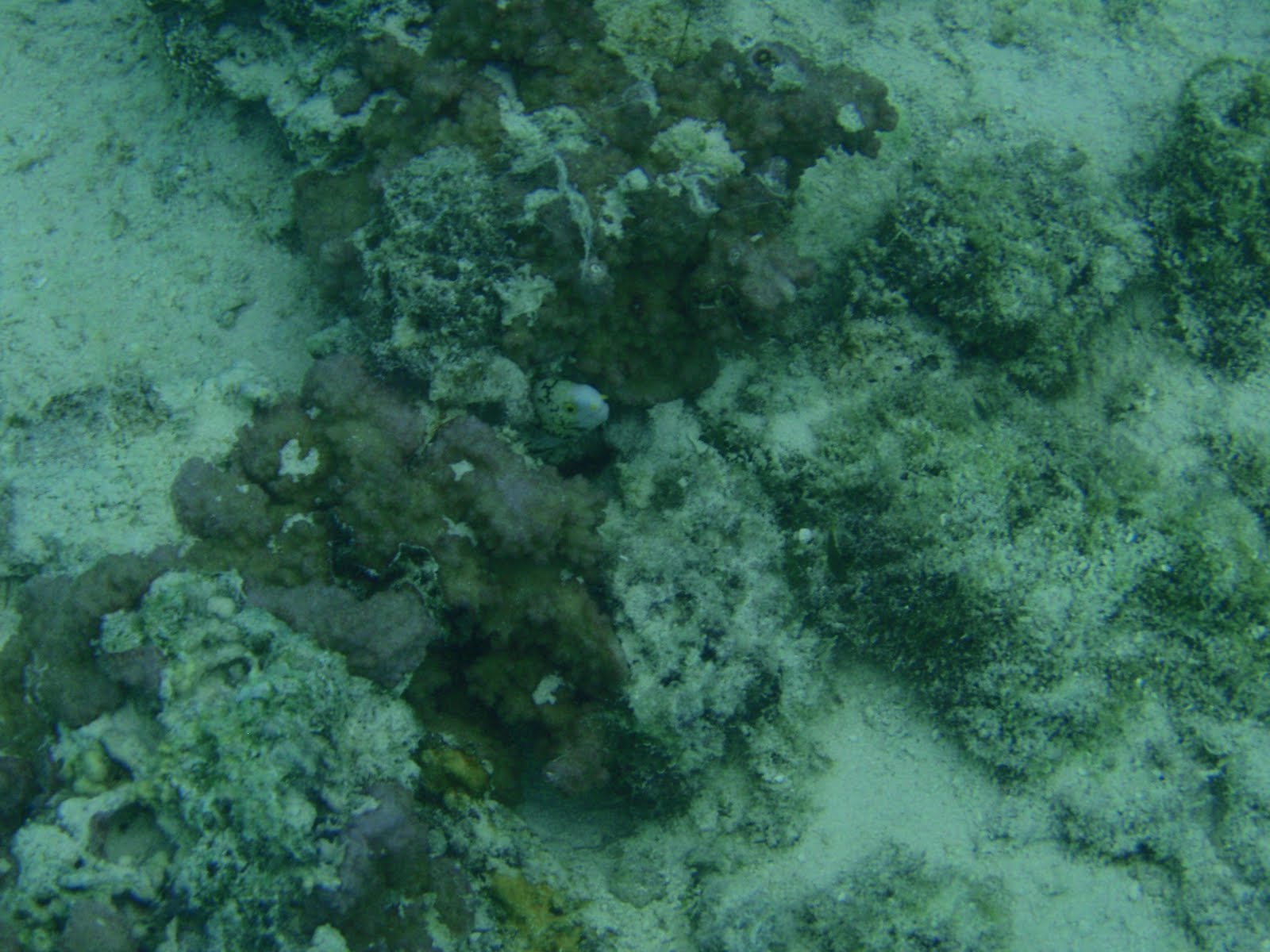
Can you see the eel? It’s a dangerous job, but we’re just the team to undertake it!
🙂 Mandy
I like hearing about how things are done down there. I had no idea of the procedures to get business done!
Very cool. I like the starship enterprise gastropod. No shell?
Nice to see Sea in the sea, again.
Badger
Nice blog and adventure. I really enjoy your humor. Brings back old memories of Invert Zoo and Dr. Cornelia Hyde – of course her specialty was cockroaches.